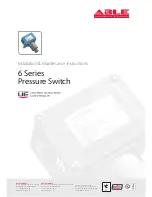
Switch model
Cabling scheme
Remarks
• HPE 5920AF-24XG
• HPE 5920AF-24XG TAA
• HPE 5900AF-48XG-4QSFP+
• HPE 5900AF-48XG-4QSFP+ TAA
• HPE 5900CP-48XG-4QSFP+
• HPE 5900CP-48XG-4QSFP+ TAA
• HPE 5900CP-48XG-4QSFP+8Gb
FC B-F
• HPE 5900AF-48G-4XG-2QSFP+
• HPE 5900AF-48G-4XG-2QSFP+
TAA
• SFP+/QSFP+ network cables
• •\SFP+/QSFP+ transceiver modules
and fibers
If the IRF member switches are far
away from one another, choose the
SFP+/QSFP+ transceiver modules with
optical fibers.
If the IRF member switches are all in
one equipment room, choose twisted
pair/SFP+/QSFP+ network cables.
For more information about available
SFP+/QSFP+ network cables and
transceiver modules, see
SFP+ port on
QSFP+ port on page
64.
• HPE 5900AF-48XGT-4QSFP+
• HPE 5900AF-48XGT-4QSFP+ TAA
• Twisted pair cables
• QSFP+ network cables
• QSFP+ transceiver modules and
fibers
2. Review the following IRF connection schemes recommended by Hewlett Packard Enterprise. These schemes use a ring
topology.
•
Connecting the IRF member switches in one rack on page 41
•
Connecting the IRF member switches in a ToR solution on page 42
Connecting the IRF member switches in one rack
Procedure
Use SFP+ network cables to connect the IRF member switches (four switches in this example) in a rack as shown in
Connecting the switches in one rack on page 41. The switches in the ring topology (as shown in Figure 32: IRF fabric
topology on page 42) are in the same order as connected in the rack.
Figure 31: Connecting the switches in one rack
Setting up an IRF fabric
41
















































